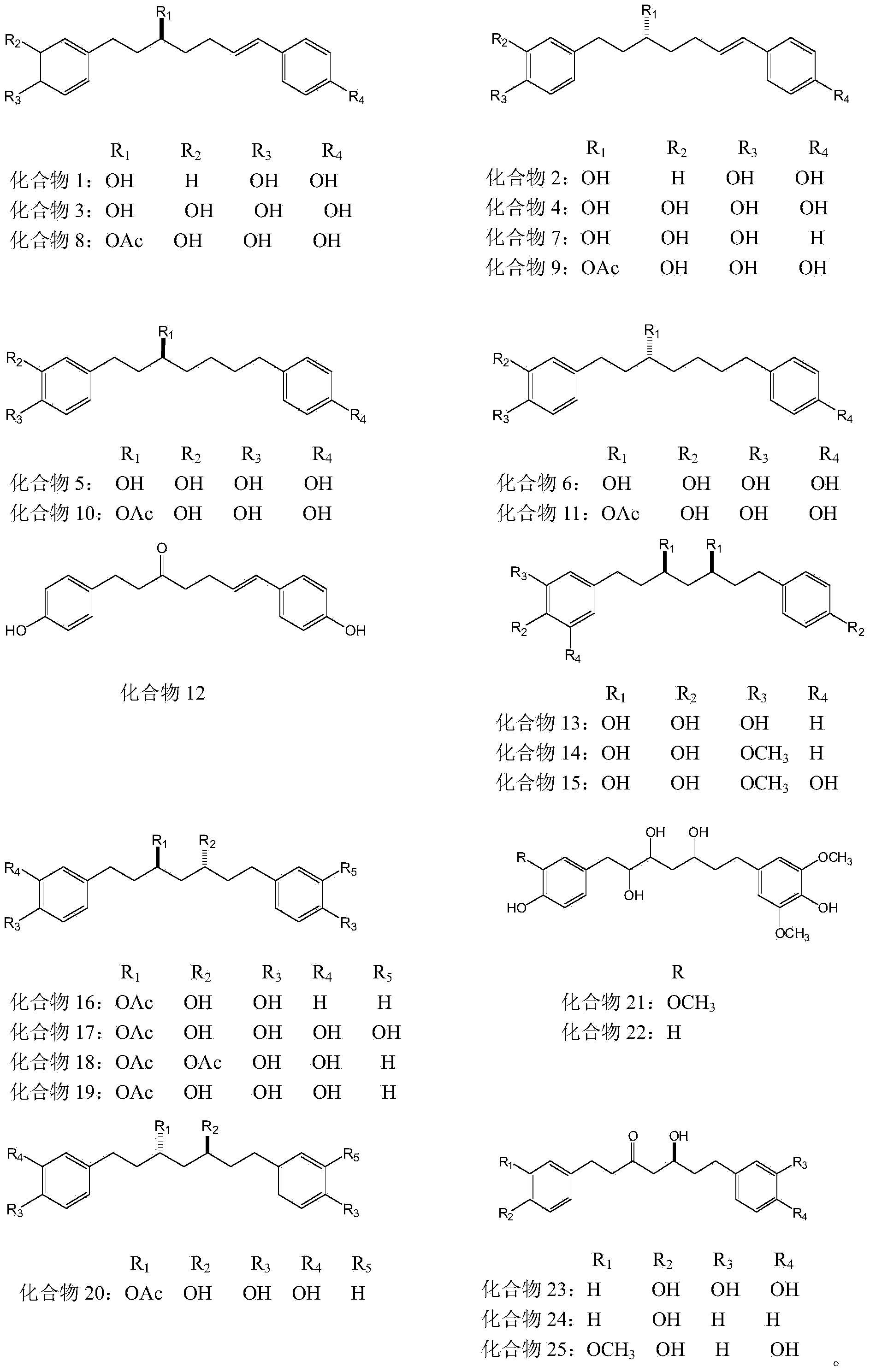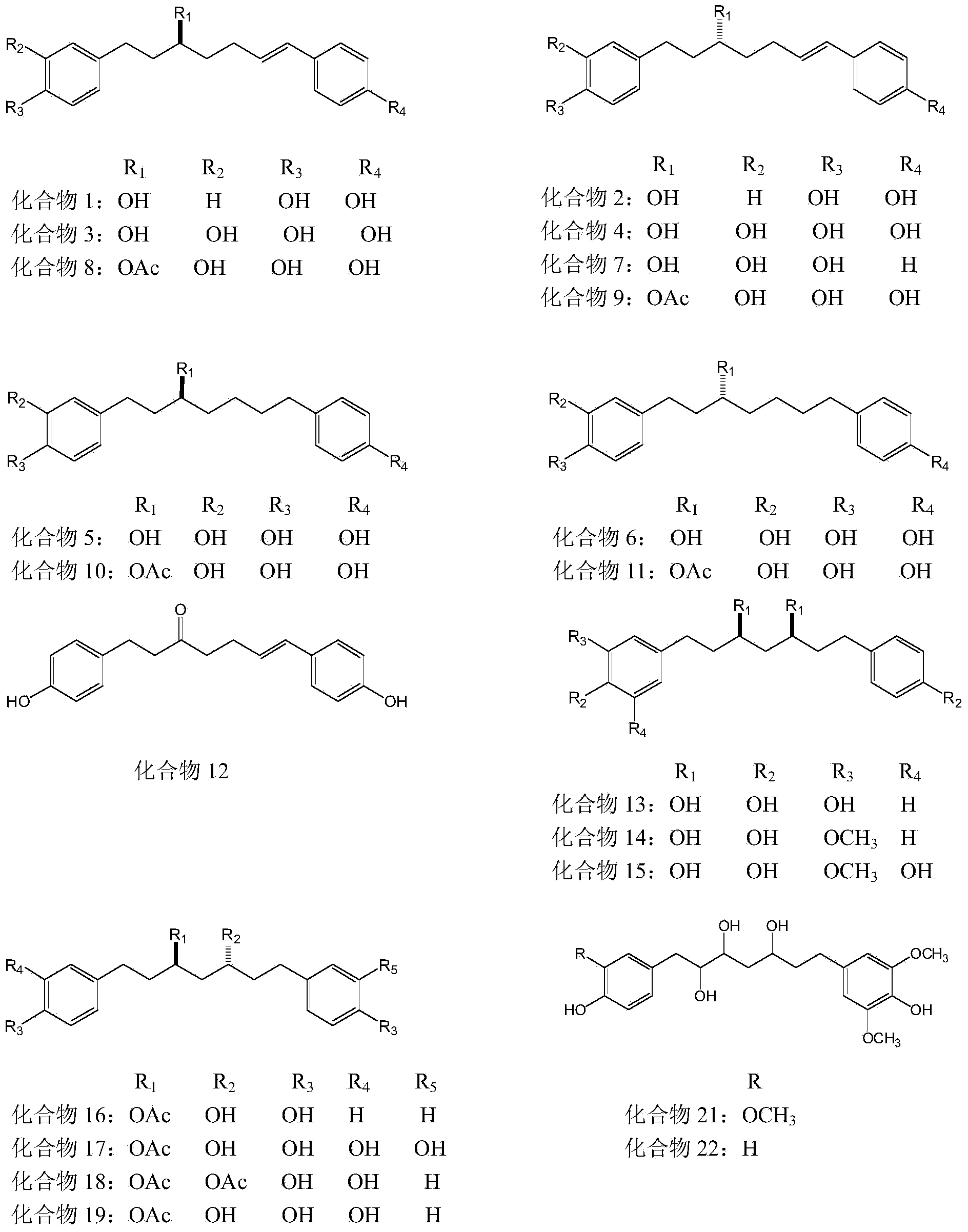Diarylheptanoid compounds in curcuma zedoary and medicinal application thereof
A technology of diphenylheptane and compound, which is applied in the field of diphenylheptane compounds and achieves the effect of good research and development prospect and novel structure
- Summary
- Abstract
- Description
- Claims
- Application Information
AI Technical Summary
Problems solved by technology
Method used
Image
Examples
Embodiment 1
[0023] Example 1: Extraction and separation of new diphenylheptane compounds in Curcuma Curcumae in Guangxi
[0024]The medicinal material was purchased in Guilin City, Guangxi Province, and was identified as Curcuma kwangsiensis S.G.Lee et C.F.Ling by Professor Sun Qishi, School of Chinese Materia Medica, Shenyang Pharmaceutical University. Rhizome 10kg, adding 70% ethanol with 3 times of raw material weight by weight to volume ratio and heating and reflux extracting 3 times, each time for 3 hours, combining the extracts, reclaiming the solvent, obtaining the ethanol extract and being dispersed in water of 5 times by weight to volume ratio, respectively Extract 3 times with cyclohexane equal to the volume of water, then extract the extracted water phase 3 times with ethyl acetate equal to the volume of water, combine the ethyl acetate extracts, and recover the solvent to obtain the total ethyl acetate extract 65g (EE), the extracted aqueous phase was then extracted three time...
Embodiment 2
[0069] Example 2: Experiment of the inhibitory activity of compound 1-25 on the release of nitric oxide (NO) from mouse mononuclear macrophage RAW264.7 induced by lipopolysaccharide
[0070] Mouse mononuclear macrophage RAW264.7 (ATCC TIB-71) was cultured in 10% heat-inactivated (56oC, 30min) fetal bovine serum (FBS), 100U / mL penicillin sodium (Gibco), 100μg / mL streptavidin In the RPMI1640 (Gibco) culture medium of the prime (Gibco), 37oC, 5%CO Z grown in a constant temperature incubator. Because NO is extremely unstable, it is quickly metabolized into nitrous acid (NO) in the cell culture supernatant. 2 - ), so the Griess method was used to determine the NO in the sample 2 - concentration as an indicator of NO levels. Griess reagent A: 0.1% N-naphthalene diamine dihydrochloride (naphthylene diamine dihydrochloride) dissolved in water: Griess reagent B: 1% p-aminobenzenesulfonamide (sulphanilamide) dissolved in 5% H 3 PO 4 middle. Mix reagents A and B in equal volumes ...
PUM
 Login to View More
Login to View More Abstract
Description
Claims
Application Information
 Login to View More
Login to View More - Generate Ideas
- Intellectual Property
- Life Sciences
- Materials
- Tech Scout
- Unparalleled Data Quality
- Higher Quality Content
- 60% Fewer Hallucinations
Browse by: Latest US Patents, China's latest patents, Technical Efficacy Thesaurus, Application Domain, Technology Topic, Popular Technical Reports.
© 2025 PatSnap. All rights reserved.Legal|Privacy policy|Modern Slavery Act Transparency Statement|Sitemap|About US| Contact US: help@patsnap.com



